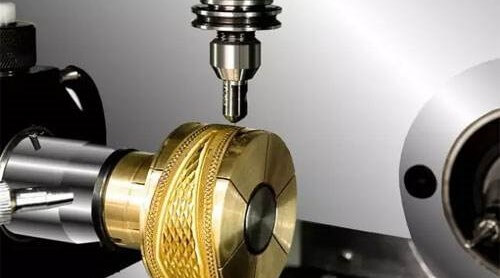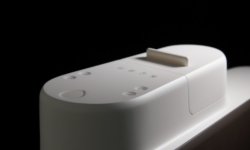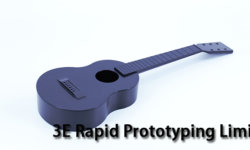Precious metals such as gold, silver and platinum form a major cornerstone of many products. While they serve as core components for electronics, energy creation and the automotive industry, they are most popular in the production of jewelry and accessories. These metals are often irreplaceable in their respective roles and embody a diverse range of characteristics, making them a crucial part of multiple products. Whether they are merely decorative or functional in their use, they are costly and require precise machining.
Consequently, as modern manufacturing technologies like CNC and 3D printing venture further into the world of industrial manufacturing, they also need to address the needs of companies that deal with precious metals in their production processes.
Used for a variety of applications, CNC machining has become increasingly popular among larger companies and artisan jewelers alike, who often use milling machines to carve or engrave detailed designs into pieces of metal jewelry. A CNC mill can also be used to carve wax for lost-wax casting projects. There are quite a few unique reasons why CNC can provide added value to one’s desired objects and make their operations stand out.
What Are the Advantages of Using CNC Machining for Precious Metals Like Gold and Sliver?
As mentioned earlier, there are a bunch of ways that manufacturing systems can interact with precious metals. Subtractive and additive manufacturing systems can be involved in indirect ways, such as producing casts for molding as opposed to processing the actual metals. Indirect manufacturing is the safer option leading to less scrap but it takes longer and is more complicated.
CNC machines provide impressive accuracy and speed, which is especially beneficial because precious metals can be expensive, so one would want the most accurate parts possible.
Luckily, metals such as gold, silver and most other precious materials are quite similar to more common metallic materials in terms of machining. This means that the process is not much different than it would normally be. While the CNC can be wasteful, the performance and ability to produce unique shapes are undeniable, particularly for an aesthetics based industry like jewelry.
It also eliminates the possibility of human error and cuts down on the need for extra machinery. The accuracy allows for better replication and standardization of products, which is difficult to match for hand-made parts.
CNC can also be precise and versatile, allowing for engraving and cutting often in the same device, thus removing the need for external peripheral devices and even eliminating additional steps in the process.
Processing Jewelry Tips
While most advice pertaining to how one should create precious metal parts depends heavily on the specifics of what is being created, there are certain general rules of thumb that beginners should keep in mind.
Equipment Limitations
Firstly, not all CNCs are cut out for cutting precious metals. Open structures, moving tables and other spaces where metal can accumulate during the process are not desirable for such purposes. Complex prints may require more than 4 axis prints and even then the CNC might have trouble with hollow sections.
Similarly, many CNC devices have trouble with 90 degrees angles, causing a tapering effect in certain areas. One workaround for this is to add extra material in the CAD model phase to compensate for it and harsh angles.
Add-ons
However, equipment limitations don’t necessarily mean that CNC mills and lasers cutters can’t be tinkered. There are of course many machines that are made precisely for engraving and carving jewelry but not everyone can afford one or would like something more versatile.
Therefore, certain CNCs can be equipped with jewelry specific add-ons and improvements like better spindles that allow them to process materials at higher RPMs or adjust diameters for the creation of specific objects. These sorts of additions can greatly boost the ability of a given device and allow for more general-purpose machines to take on precise functions. Keep an eye out for what additions might best suit your purposes and materials, speaking of which…
Know Your Materials
Similarly, when it comes to direct machining, materials also raise concerns. For example, gold and silver can require lubrication or mist coolant application to improve feed-rates (which also depends on your machine) and since they are soft metals they require a little more RPM.
Particularly when it comes to jewelry, wax cast or otherwise, it’s important to keep track of heat and warping. This especially applies to wax mold creation, which requires delicate applications of cooling to balance out potential deformities in the intended part.
It can, therefore, be helpful to have a machine with a cooling system in place or, if you can afford it, use a water jet CNC machine (which also eliminates the need for tooling changes).
Minimize Waste
One problem that CNC often faces is that of material waste, which is not as much of an issue when dealing with blocks of cheaper metals or with wax, but can get costly when dealing directly with silver and gold.
Utilizing CNC milling services would generally be best for smaller parts but another way to minimize waste is performing the part to be closer to the end product.







